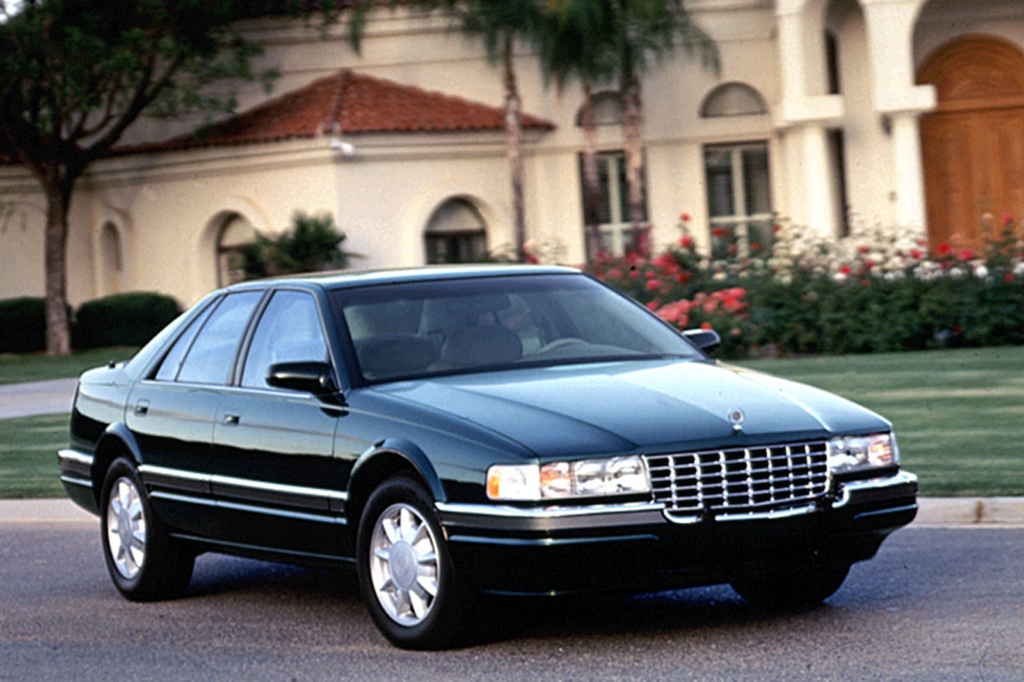Without a long history of vehicles that helped define culture, it’s difficult to become the second most referenced car brand in music. In the 1970s and 1980s, no gangster film was complete without a Cadillac because legendary career criminal Al Capone drove a bulletproof 1928 Cadillac. Whether wealth and success were earned honestly or not, this was the American way to show them off. Cadillac never left the spotlight despite its heyday with movie and music stars in the 1930s to 1960s. Cadillac committed to moving away from luxury barges and into the world of luxury SUVs at the turn of the century, just at the right time. It currently faces off against the dominant European brands in the market for premium sports sedans and coupes.
The Greatest Cadillacs Of All Time
1. 1930 Cadillac V16 (1930–1940)

In 1930, Cadillac discontinued the Cadillac V16, a pricey, upscale vehicle with a first-of-its-kind V16 engine in the US. Cadillac nailed the design, making it more potent and refined than any vehicle before it. It was adored by the public, the motoring press, and those who could afford it. Despite the poor timing, it was a turning point for Cadillac as a luxury brand. The new car had been planned since 1926, but it wasn’t released until 1929, a year after the Wall Street crash. The most expensive car in America was thus unveiled by Cadillac just in time for the Great Depression. By April of 1930, Cadillac had built 2,000 V16s to order, but then sales dropped off a cliff. In October, only 54 were built. Pictures below are a 1930 Cadillac V16 Sport Phaeton with bodywork by Fleetwood.
2. 1957 Cadillac DeVille

Elvis Presley, Joni Mitchell, Aretha Franklin, and Bruce Springsteen were among the celebrities who owned the Cadillac DeVille, which was a trim for the Series 62 model. The name Coupe DeVille or Sedan DeVille, which derives from the French “de ville, meaning of the town,” was available starting in 1957. The word “coupe,” which means to shorten or reduce something, is derived from the verb “couper.” The first town car was the Cadillac DeVille, which featured a spacious trunk on the back and interiors covered in plush leather and gleaming chrome.
3. 1959 Cadillac Series 62

Cadillac introduced its iconic 20th-century model in 1959. Each of the four body designs available for the Series 62 is an icon in and of itself. Each of the four- or six-window hardtop sedans, two-door hardtop coupes, and convertibles that were available were equipped with those enormous tail fins and recognisable dual bullet taillights. The Series 62 debuted in 1960 with understated styling and less chrome. Then, in 1961, it underwent a redesign and re-engineering, losing some of its glory and its space-age appearance.
4. Cadillac Seville (1992-1997)

Cadillac made its first attempt to entice younger customers away from imports in 1975 when it turned the Seville name into a separate model. It was a failure. The fourth generation didn’t succeed either, but the 1992 Cadillac Seville was a fantastic vehicle on its own. In order to enhance ride quality and incorporate design elements from the Cadillac Voyage concept car, it received a new unequal-length control arm rear suspension. Although some might object, the Seville from the early 1990s made the Ten Best list of Car and Driver magazine and MotorTrend’s Car of the Year list. The Seville was a real American sports sedan that was strong, smooth, and authentic.
5. Cadillac Escalade (1998 – Present)

The SUV and the luxury SUV both gained popularity in the late 1990s. Cadillac needed to enter the market given the presence of vehicles like the Lexus LX, Range Rover, Lincoln Navigator, and Mercedes-Benz G-Class. It contributed the 1998 Escalade, which was mechanically the same as the GMC Yukon Denali but featured all-wheel drive as standard equipment and was loaded with a tonne of upscale standard features. An extended wheelbase version of the Escalade was added as it gained popularity over the years. The fourth generation was introduced in 2014 and became a component of Cadillac’s brand revitalization. The fifth generation, which debuted in 2020, raised the bar for American luxury.
6. Cadillac CTS-V (2003 – 2019)

The CTS-V, which debuted in 2003, was the beginning of another attempt by Cadillac to sway consumers away from European automobiles, particularly those made in Germany, like BMW M vehicles. With a 400-hp LS6 V8, a Tremec T56 6-speed manual transmission, a sport-tuned suspension, and Brembo brakes, the CTS-V was the high-performance version of the CTS line. With an LT4 supercharged gasoline V8 engine making 640 hp, the CTS-V hit its stride in the third generation and became the most potent Cadillac in company history. As bizarre as that is, a CTS-V waggon was unveiled in 2011 and lusted after by enthusiasts, but very few people actually purchased one.
7. Cadillac CT5-V Blackwing

The word epic is appropriate for describing Cadillac’s final internal combustion-powered luxury sports sedan. A 6.2-liter supercharged V8 engine pushing the CT5-V Blackwing to 60 mph in 3.4 seconds has 668 horsepower and 659 lb-ft of torque. That’s 0.3 seconds slower than the similarly expensive BMW M5 Competition, but Cadillac anticipates that the Blackwing’s driver will be able to control the vehicle even when only the rear wheels are receiving power. It embodies the phrase “iron fist in a velvet glove” with its brutal performance mixed with smooth luxury.
8. 1937 Cadillac Phaeton 5859

The Phaeton 5859 is included at the end of this list even though it isn’t an official Cadillac vehicle. Not even in 1937 was it constructed. The Chicago-based restorer and craftsman Fran Roxas built it in the early 1980s. The vehicle is built from the initial sketches of a V16 model by Cadillac designer John Hampshire that was never produced. As evidenced by the fate of the Cadillac V16 during the American Depression, this decision was wise. The original design served as an illustration of what could be produced for a client, but the client never materialised, and the body was never constructed. GM did help out by providing full-size factory blueprints of the first-generation Sixteen chassis to the group building the Phaeton 5859.
Roxas built the car mostly for himself and drove it for a while before eventually selling it. In 1984, it won First in Class in the New Coachwork Class category at Pebble Beach, and in 2012 sold for $962,500 at a Sotheby’s auction.
